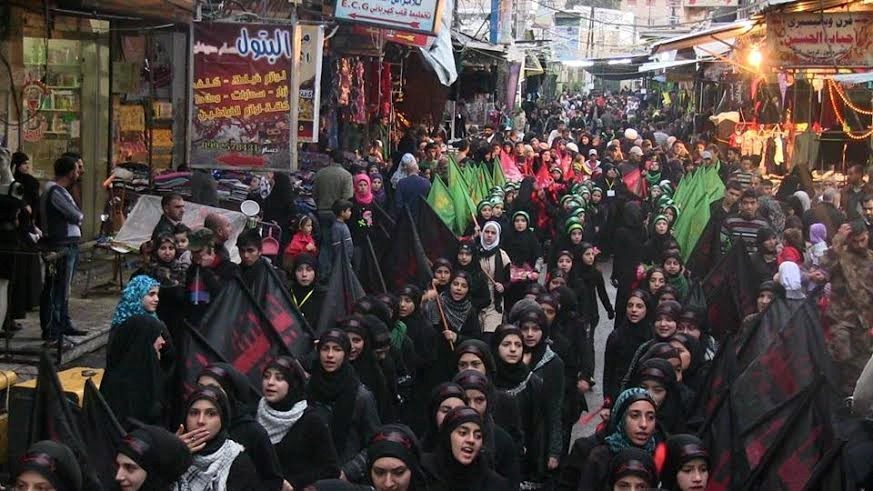
Ashura, a religious occasion in which Shiites commemorate the murder of Imam Hussein, the grandson of the Prophet Muhammad, was for many Syrians totally different this year.
The streets of Damascus, known to be the Umayyad capital,’ were filled with Shiite self-flagellation rituals.
While this is not the first year that Shiites observed Ashura in Damascus, where the shrine of Hussein’s sister Sayyida Zainab is thought to be in it, the ceremonies were not as in previous years limited to the predominantly Shiite areas of the city, such as the Al-Amin neighborhood and places near the shrine of Zainab.
This year, the ceremonies took place on an unprecedented scale, with more participants and extending across greater areas of the city – even to Damascus’s Umayyad Mosque, the symbol of the 661-750 CE rule of the Umayyad dynasty in Damascus.
These wide-scale Ashura ceremonies in Damascus constitute a show of force by Assad and his Shiite allies. They also signal to the regime’s opponents both within and outside Syria that the regime is confident of its alleged victory.
For the majority of Syrians, the widespread Shiite ceremonies represent another phase in the process of the Shiization of Syria, which is happening with the consent, and even under the direction, of the regime, and which has accelerated since the beginning of the revolution in March 2011.
In this concern an Iraqi news agency reporting on the extensive Ashura ceremonies in Damascus noted: “This year there was significant [pilgrim] movement [in the city], unlike in the last three years, when there was vulnerability in the security situation.”
However, many Syrians, both inside and outside Syria, believe that when Assad regime permitted such widespread Ashura ceremonies in Damascus itself, the capital of the Umayyad rule, it has exposed its sectarian face and showed that it intended to completely change the city’s characteristics and transform it into a Shiite city.
During Ashura there were self-flagellation processions across the city, and calls that do not belong in Damascus.
Many Damascus people voiced their apprehension that the cruelty reflected in the Shiite custom of self-flagellation to the point of bloodshed in Ashura ceremonies would be channeled against Syrians who dared to oppose the Shiites.
A woman who lives in Damascus said: “The streets of Damascus are filled with people who are not like us, and with the black vehicles of clerics and politicians for whom these people cleared the streets. Even the smells are alien. The scent of blood permeates the place – as if the blood of the dead and of the war was not enough.”
The woman who asked to be anonymous added: “We have now among us those who invent religious ceremonies with unfamiliar sights… as if to intimidate you with them.”
On another much more dangerous level the Shiization process is functioning both demographically and culturally. Since March 2011, Assad regime has been expelling local residents in Damascus countryside and offering Shiites incentives to settle in strategic locations, in order to populate these areas with its supporters and also as an incentive to recruit them to fight for it.
This process is apparently being funded and supported by Iran which has become through its power centers and militias an occupying force in Syrian while Assad keeps drawling about sovereignty.



